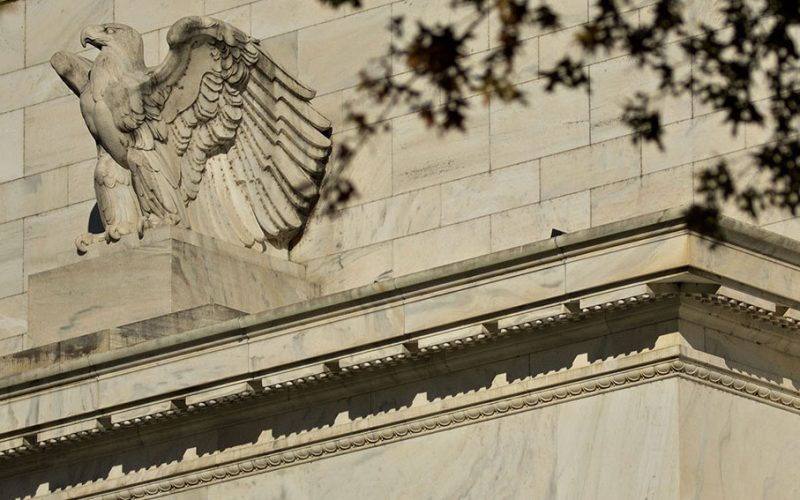by Kevin McCreadie, MBA, CFA®, CEO and Chief Investment Officer, AGF Management Ltd.
Another bout of heightened market volatility may be ahead if U.S. monetary policy defies market expectations, says AGF’s CEO and Chief Executive Officer.
Why is the recent failure of Silicon Valley Bank and Signature Bank still a risk to investors—even as the threat of a full-blown financial crisis seems greatly diminished?
The bank failures have obviously unsettled investors. And even though equity markets have rebounded from the initial turmoil, there is still wide-spread belief that these failures could lead to a more aggressive slowdown in economic activity that results in a recession much sooner than would otherwise be the case.
This largely has to do with how regional banks in the U.S. are being forced to tighten their lending standards out of fear that their deposit base(s) may continue to dwindle as depositors either choose bigger banks to entrust their money or look for higher interest-bearing alternatives to invest their savings.
In turn, there seems to be less buffer for some regional banks to lend out money going forward and it is reasonable to think many of them may be pricing themselves out of the loan market altogether by offering exorbitant terms that borrowers are unwilling to accept.
How does this influence the U.S. Federal Reserve’s next move(s)?
It certainly complicates matters. Credit is like oxygen for the economy, and, without it, growth can easily get snuffed out. That’s why some investors believe the Fed needs to start cutting rates to make credit cheaper and more attractive to potential borrowers. But the Fed doesn’t necessarily see it that way – at least not entirely. In fact, while bond markets, in particular, have priced in multiple rate cuts by the end of the year, there’s been no such signal from the U.S. central bank, which remains laser-focused on getting inflation under control, seemingly above all else.
This disconnect doesn’t mean the Fed is deaf to the economic risk of tighter credit conditions, but it does seem unwilling to make a dramatic change in its policy until it either sees significant progress toward its 2% inflation target or incoming data starts to show more definitive signs of a serious slowdown in the economy. Given that, a more likely scenario is for the Fed to pause its current rate-hiking cycle starting in May and then wait to see what happens on the economic front before making any more decisions on what direction to take next.
What might be the reaction of markets if the Fed doesn’t start cutting as soon as some investors are expecting?
It sets investors up for disappointment. Gains on equity markets over the past month can be attributed in part to the expectation of rate cuts. So, if they don’t happen this year, it would likely lead to another bout of extreme volatility and a potential re-test of last year’s lows.
That said, a pause by the Fed could still be viewed as a step in the right direction that results in equity markets holding their own and continuing to trade in range-bound fashion over the next couple of months. But that also likely depends on how long interest rates stay unchanged, if that’s what ends up happening starting in May. After all, if the current disconnect persists, markets are bound to get antsy if economic conditions deteriorate from here without a more aggressive response from the Fed.
The views expressed in this blog are those of the author and do not necessarily represent the opinions of AGF, its subsidiaries or any of its affiliated companies, funds, or investment strategies.
Commentary and data sourced Bloomberg, Reuters and company reports unless otherwise noted. The commentaries contained herein are provided as a general source of information based on information available as of April 25, 2023 and are not intended to be comprehensive investment advice applicable to the circumstances of the individual. Every effort has been made to ensure accuracy in these commentaries at the time of publication, however, accuracy cannot be guaranteed. Market conditions may change and AGF Investments accepts no responsibility for individual investment decisions arising from the use or reliance on the information contained here.
This document may contain forward-looking information that reflects our current expectations or forecasts of future events. Forward-looking information is inherently subject to, among other things, risks, uncertainties and assumptions that could cause actual results to differ materially from those expressed herein.
AGF Investments is a group of wholly owned subsidiaries of AGF Management Limited, a Canadian reporting issuer. The subsidiaries included in AGF Investments are AGF Investments Inc. (AGFI), AGF Investments America Inc. (AGFA), AGF Investments LLC (AGFUS) and AGF International Advisors Company Limited (AGFIA). AGFA and AGFUS are registered advisors in the U.S. AGFI is registered as a portfolio manager across Canadian securities commissions. AGFIA is regulated by the Central Bank of Ireland and registered with the Australian Securities & Investments Commission. The subsidiaries that form AGF Investments manage a variety of mandates comprised of equity, fixed income and balanced assets.
® The “AGF” logo is a registered trademark of AGF Management Limited and used under licence.
Copyright © AGF Management Ltd.














